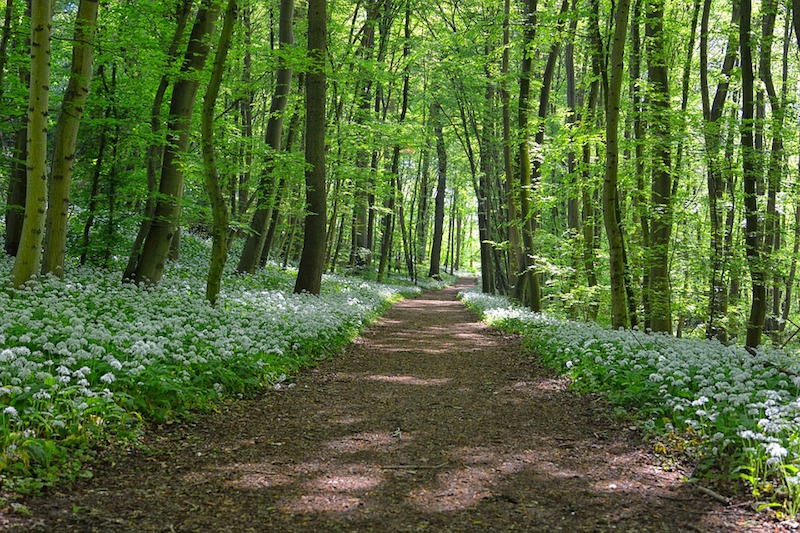Intuition tells us that views of and exposure to the outdoors are good for the human mental state. In recent years, a handful of scientific studies—most notably Heschong Mahone’s daylighting in schools research—has provided AEC teams with important data to back up design decisions around daylighting, views, biophilic design, and a stronger connection with nature.
As a result of these early studies—and our improved understanding of the human mind—building owners and real estate developers have invested considerably to inject nature into their building projects. From hospitals to schools to office buildings, nature has become big business in new construction and renovation work. Landscaped terraces, rooftop gardens, nature meditation rooms, living walls, healing gardens, on-site parks, walking paths, therapy gardens—these are de rigueur in the modern built environment.
But how much “nature” is needed on projects? Is more always better when it comes to these features and spaces? And what types of nature-inspired design elements are most effective? Considering that these components often require special maintenance procedures and staff and ongoing operational investment, it’s important to explore these questions.
New research from King’s College London, published in the peer-review journal BioScience, sheds some light on the subject. It also provides a method by which AEC teams can assess the effectiveness of nature-inspired features.
Using a custom smartphone app, Urban Mind, the research team monitored the momentary mental well-being of 108 city dwellers, who completed 3,013 “ecological momentary assessments” during a one-week period. Each participant was asked to complete seven assessments per day. Questions included: Are you indoors or outdoors? Can you see trees? Can you see the sky? Can you hear birds singing?
Among the findings: There is a “significant” lagging effect of nature on momentary mental well-being. That is, nature has a lasting positive effect on the mind.
How long exactly? It depends. The data shows, for example, that seeing trees and seeing the sky during an assessment had a statistically significant effect on momentary well-being in the next subsequent assessment, which took place an average of two hours and 25 minutes later. For those “feeling in contact with nature,” the positive mental well-being spike lingered as long as four hours and 50 minutes. Same for “hearing birds singing.” The lingering benefit of “seeing or hearing water” was not as statistically significant.
Obviously, more research is needed in this area, but the study’s basic conclusions could help AEC teams make better-informed decisions about nature-inspired design. For instance, can building design features amplify or extend this lagging positive effect? Is a three-acre healing garden overkill when one acre will do? Do we need more birds chirping inside buildings (please, no!)?
Related Stories
| Nov 2, 2010
Yudelson: ‘If It Doesn’t Perform, It Can’t Be Green’
Jerry Yudelson, prolific author and veteran green building expert, challenges Building Teams to think big when it comes to controlling energy use and reducing carbon emissions in buildings.
| Nov 1, 2010
Sustainable, mixed-income housing to revitalize community
The $41 million Arlington Grove mixed-use development in St. Louis is viewed as a major step in revitalizing the community. Developed by McCormack Baron Salazar with KAI Design & Build (architect, MEP, GC), the project will add 112 new and renovated mixed-income rental units (market rate, low-income, and public housing) totaling 162,000 sf, plus 5,000 sf of commercial/retail space.
| Nov 1, 2010
Vancouver’s former Olympic Village shoots for Gold
The first tenants of the Millennium Water development in Vancouver, B.C., were Olympic athletes competing in the 2010 Winter Games. Now the former Olympic Village, located on a 17-acre brownfield site, is being transformed into a residential neighborhood targeting LEED ND Gold. The buildings are expected to consume 30-70% less energy than comparable structures.
| Oct 21, 2010
GSA confirms new LEED Gold requirement
The General Services Administration has increased its sustainability requirements and now mandates LEED Gold for its projects.
| Oct 13, 2010
Editorial
The AEC industry shares a widespread obsession with the new. New is fresh. New is youthful. New is cool. But “old” or “slightly used” can be financially profitable and professionally rewarding, too.
| Oct 12, 2010
University of Toledo, Memorial Field House
27th Annual Reconstruction Awards—Silver Award. Memorial Field House, once the lovely Collegiate Gothic (ca. 1933) centerpiece (along with neighboring University Hall) of the University of Toledo campus, took its share of abuse after a new athletic arena made it redundant, in 1976. The ultimate insult occurred when the ROTC used it as a paintball venue.
| Oct 12, 2010
Cell and Genome Sciences Building, Farmington, Conn.
27th Annual Reconstruction Awards—Silver Award. Administrators at the University of Connecticut Health Center in Farmington didn’t think much of the 1970s building they planned to turn into the school’s Cell and Genome Sciences Building. It’s not that the former toxicology research facility was in such terrible shape, but the 117,800-sf structure had almost no windows and its interior was dark and chopped up.
| Oct 12, 2010
The Watch Factory, Waltham, Mass.
27th Annual Reconstruction Awards — Gold Award. When the Boston Watch Company opened its factory in 1854 on the banks of the Charles River in Waltham, Mass., the area was far enough away from the dust, dirt, and grime of Boston to safely assemble delicate watch parts.
| Oct 12, 2010
Building 13 Naval Station, Great Lakes, Ill.
27th Annual Reconstruction Awards—Gold Award. Designed by Chicago architect Jarvis Hunt and constructed in 1903, Building 13 is one of 39 structures within the Great Lakes Historic District at Naval Station Great Lakes, Ill.
| Oct 12, 2010
Full Steam Ahead for Sustainable Power Plant
An innovative restoration turns a historic but inoperable coal-burning steam plant into a modern, energy-efficient marvel at Duke University.
















